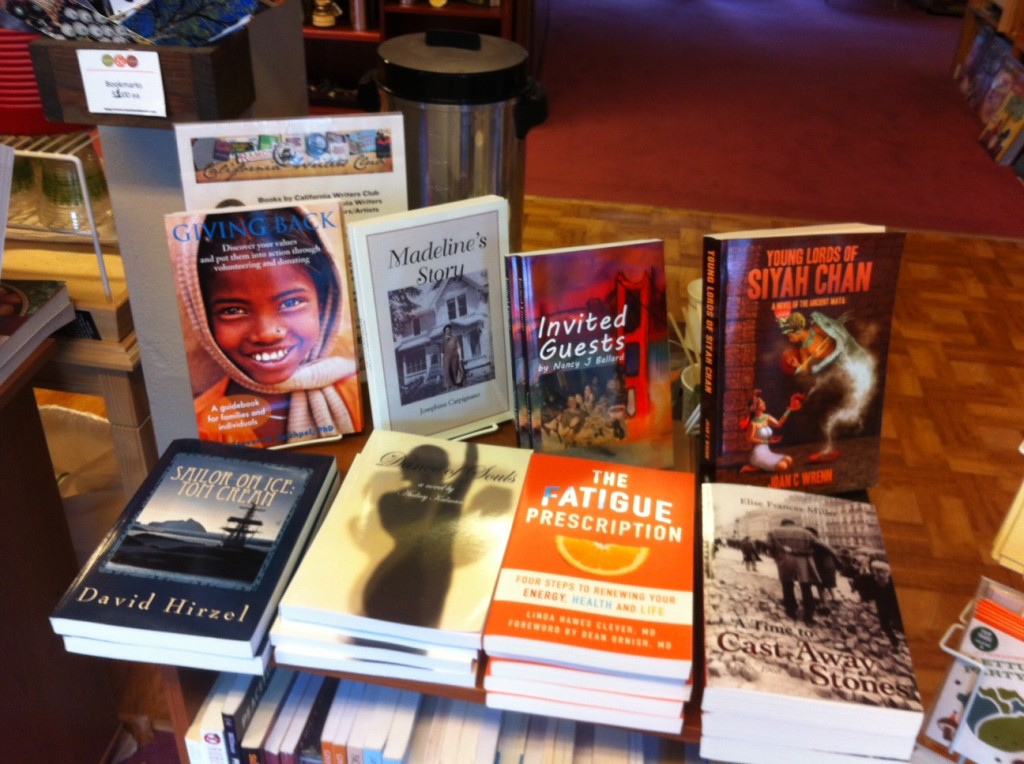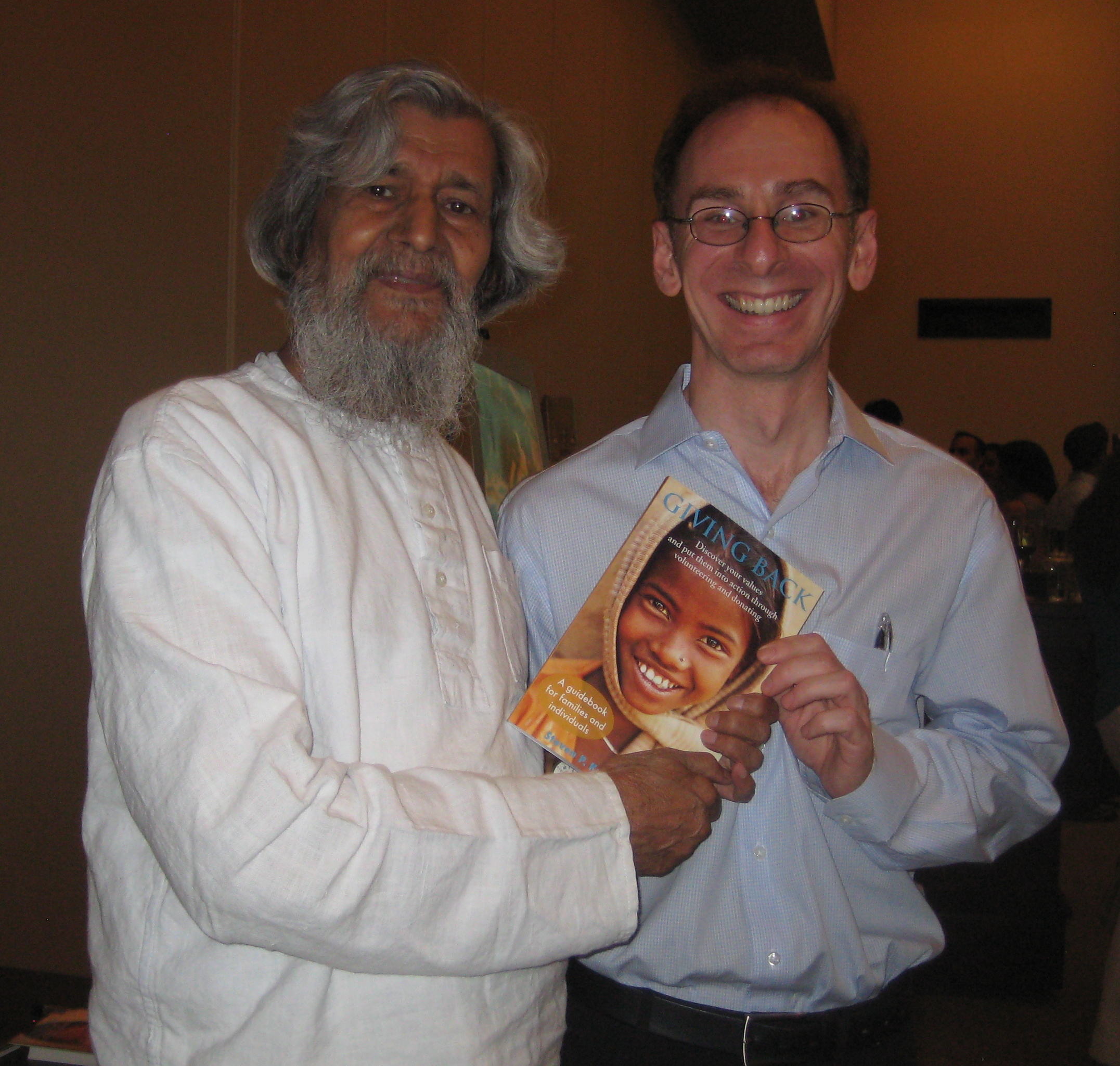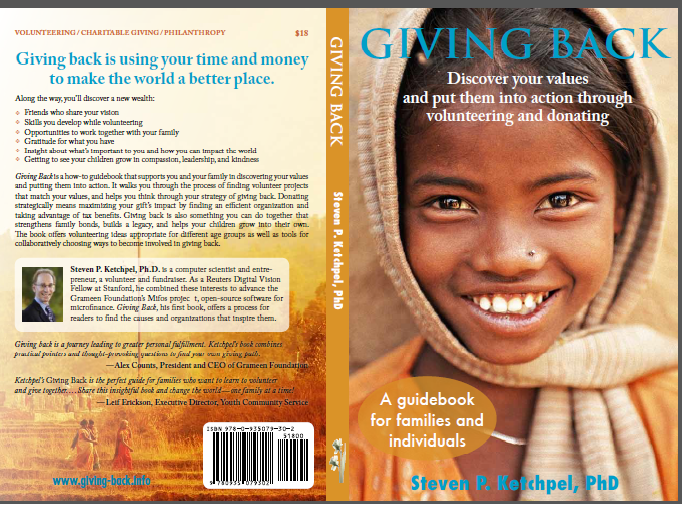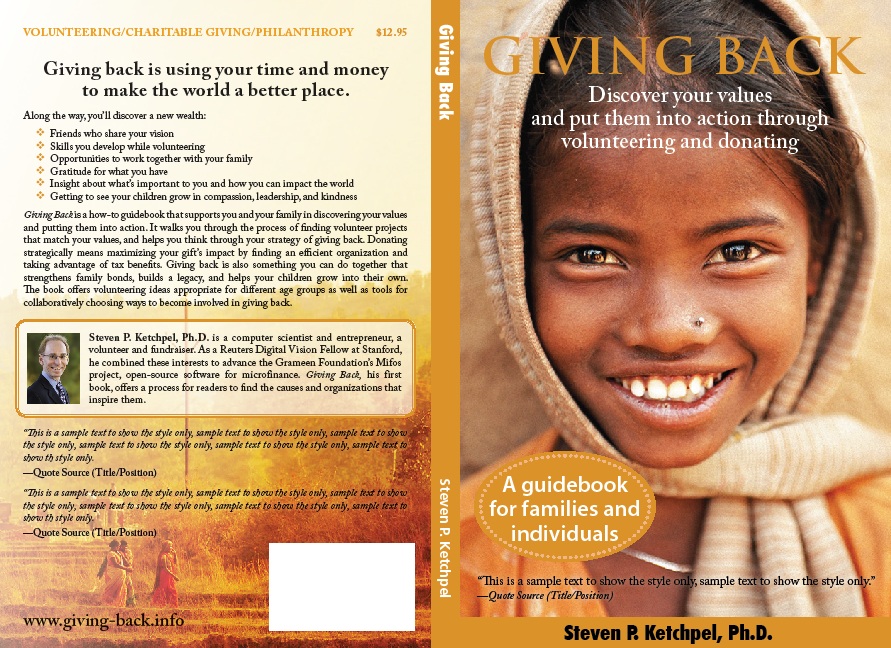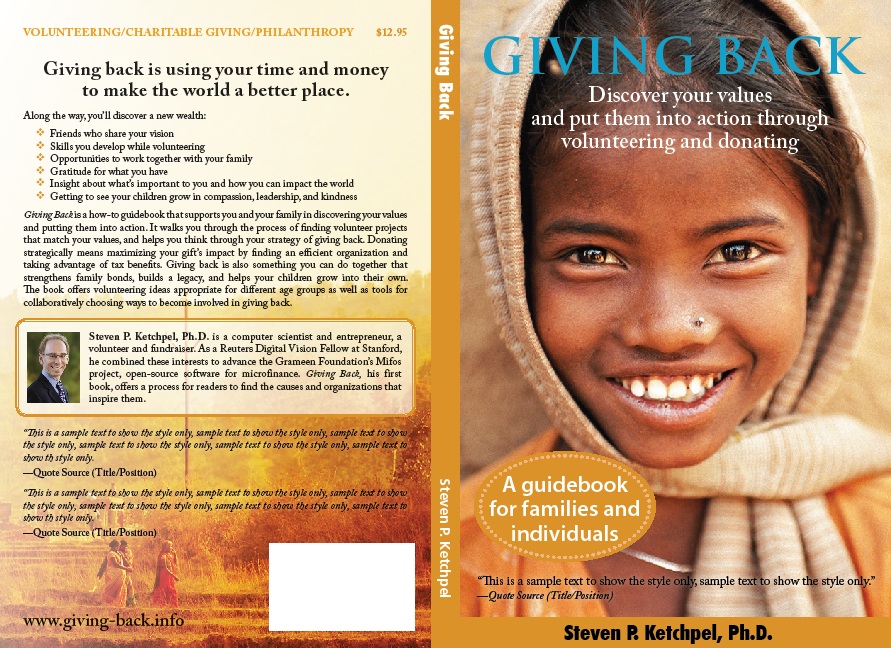The promotion that I ran with Amazon (Kindle version available to download free any time on December 12, 2012) has just ended, and being the web metrics geek that I am, I thought I’d share a few thoughts on the results.
First of all, a big Thank You! to all those who helped.
There were lots of emails, Facebook posts, Google Plus shares and Tweets flying around yesterday. Lots of people heard about Giving Back for the first time, and lots of them were moved to take action and download the book.
I view the promotion as a big success. According to Amazon’s stats, 673 copies were downloaded during the 24 hour period.
That’s about twice as many people as had the book before, (the existing base was mostly print, only a handful of digital copies), bringing the total to more than 1,000. If you’re running the math on the financial attractiveness of writing a book, my advice is to keep your day job. 🙂
Amazon doesn’t provide a lot of stats about where the “Kindle Direct Publishing” purchases come from, so I’ll make some guesses. Most people who tweeted, created Facebook posts or forwarded an email used the link that I provided (http://amzn.to/W7010b) which encoded my affiliate tag. From the Amazon Associates report, I can tell there were 664 clicks on that link on 12/12/12. I’d assume the conversion rate from “looking at the product page” to “downloading the Free Kindle version” was pretty high, so I think that the affiliate tagged links count for a large fraction (80%+) of all the buyers.
Some of the chronological highlights of the day
- Early AM: Christine Carter, author of Raising Happiness, included a blog post/contest involving Giving Back. We had originally talked about doing a give-away of 5 print copies, but then the timing worked out for 12/12/12, she referred people to the free Kindle copy as well.
- About 9:00 AM: Beth Kanter, author of Measuring the Networked Nonprofit, and Beth’s Blog, among others. She coincidentally came out with a post yesterday including Giving Back in a set of “8 Books for Nonprofits to Read“. She’s a thought leader in the non-profit space, and her entry was a nice summary of 8 good, relevant books. (Yes, I was psyched to be included!)
- About 3:10 PM: John Lilly, former CEO of Mozilla, currently a partner with Greylock Partners, sent a tweet to his 120K twitter followers
- About 5:00 PM: Mersedeh Jorjani sent it to 2,000 of her colleagues at Salesforce.com.
- About 11:15 PM: Peggy Duvette sent it to the Wiser.org community
But that doesn’t give adequate credit to the people who wrote Facebook posts (13 that I’m aware of), commented on, shared or liked those posts (about 20), liked the Giving Back Facebook page (18 new people yesterday), tweeted or re-tweeted (15 or so), or the 2 Google Plus posts and 2 more shares and 3 posts on Amazon.
In addition to the Kindle downloads, 4 people bought paperback copies. That may not sound like much, but for me, it’s a big day (like I said, keep your day job.)
The other exciting thing was seeing my book climb the ranks. That’s one thing that Amazon does very well. They segment their catalog at a granularity that books can fairly easily rank in *some* category. My print version lands in the “Books > Business & Investing > Jobs & Careers > Volunteer Work” category, and while I don’t know the full formula, the 4 copies I sold on the 12th were enough to push me up to #16 in the ranking, which will decay over time probably dropping me out of the Top 100 by the end of the day tomorrow (of course, if I sell more copies, I could climb rather than fall….[Wow! That happened! 3 more copies early on the 13th carried me all the way to #4, though now on the way back down.])
The digital version appears in two categories:
Non-fiction > Advice & How To > Parenting > Family Activities
Non-fiction > Business & Investing > Professions & Industries > Non-Profit Organization & Charities
Amazon tracks “Free” Kindle content separately from “Paid” Kindle content, with Top 100 ranking lists for both types in all of the categories and sub-categories. So, as the promotion ended, and my content changed from “Free” back to “Paid”, all of the standing I’d built up in the rankings disappeared. (Presumably, it would return, although be decayed, if I made the content free again.) Anyway, the top rankings that I received in each category (again, Kindle Free content only) were:
- Non-Profit Organizations & Charities: #1
- Professions and Industries: #1
- Family Activities: #3
- Parenting: #6
- Business & Investing: #8
- Advice & How To: #26
- Non-Fiction: Not Ranked. I never quite made it to the top #100, but I must have been close. When I was #8 in Business & Investing, the #6 book was #97 in Non-fiction. So, I’m pretty sure I was in the Top 150. Plus, if you look at the “Non-fiction” category, a bunch of the top entries are actually fiction.
- Overall: #398
For those of you who were around for the “Flash Mob” print-book launch back in August, these results were better, with 20 copies sold at that virtual event. I sent this invitation to a larger group, and was more intentional about asking people to share it. And, hey, a free Kindle version is something that’s easier to pass along to a friend or acquaintance than a suggestion to buy an $18 paperback….
I was also surprised/impressed with the amount of free Kindle content that seemed interesting. See for example, The Top 100 Non-Fiction “best-sellers”.
Finally, I’ll note that promoting the give-away was a good excuse to get back in touch with some friends I hadn’t heard from in years, so that was another great benefit!
[The Facebook page stats are on a longer latency, and I’m still waiting for them to come in. I’ll perhaps add a bit more color for reach and virality when Facebook provides the information.]

